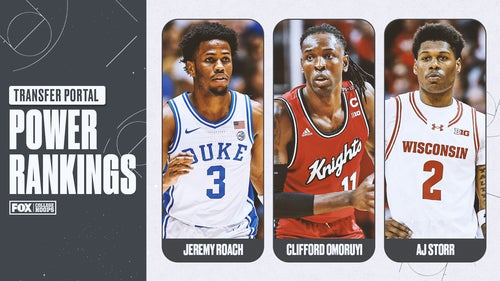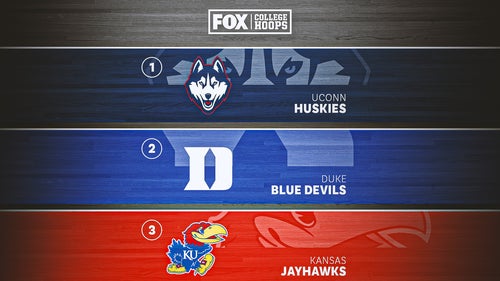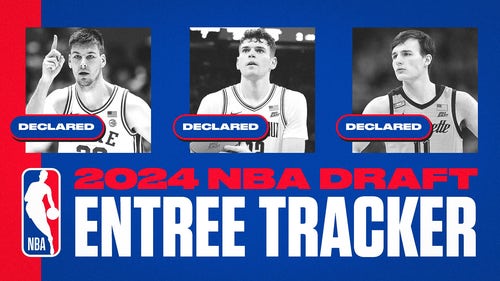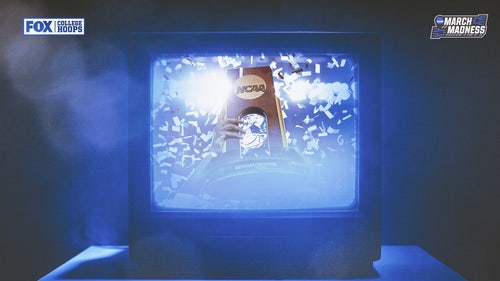





































































































































Study: Graduation rates for men’s NCAA teams trail the women
RALEIGH, N.C. (AP) — A diversity report for graduation rates among this year's NCAA Tournament teams continues to show male players lagging behind their female counterparts.
The study released Tuesday from The Institute for Diversity and Ethics in Sport (TIDES) at Central Florida also found a significant gap in graduation rates between black and white men's players. But institute director Richard Lapchick said that gap was the smallest it had been in the study's history, while men's players posted their highest Graduation Success Rate (GSR) scores and the women's players tied their own high marks.
"Those are both obviously good things," said Lapchick, the lead report author. "But the (gender) gap is still substantial."
The study looked primarily at the GSR, which was developed to allow the NCAA to track the progress of Division I student-athletes for six years following their entrance to schools. GSR doesn't penalize schools for athletes who leave in good academic standing and counts transfers at their new schools, while a federal graduation rate would consider them non-graduates and doesn't factor in those common roster movements.
Lapchick said the TIDES study examined data for players who would've entered school in 2011, starting a clock that expired in 2017.
The overall GSR for women was 92 percent compared to 81 percent for the men, according to the study.
When it came to race, the difference in average GSR for white male players on NCAA teams (92 percent) and black male players (79 percent) shrunk by five percentage points thanks solely to improvement by the latter. By comparison, that gap was 27 percentage points when the study began in 2006 and 32 points in 2011, according to the study.
On the women's side, the average GSR for white female players increased by two percentage points (96 percent) while dropping three percentage points for black female players (88 percent). But Lapchick said that could be little more than a fluctuation for this particular set of tournament teams in the field.
"That one has been consistently so good that I would think this rise in their gap is an anomaly," he said.
When comparing the federal rate and GSR, both black and white basketball players on the men's and women's side significantly outperformed their non-athlete counterparts.
"It says to me that student-athletes are getting more attention to make sure that they're able to stay eligible or to hopefully to graduate," Lapchick said. "And typically African-American students that come to campus don't have those resources poured into them.
"So it says to me that the student development people in universities as a whole need to model some of the support that student-athletes are getting for the entire student body."

2024 college basketball transfer portal tracker: Purdue sixth man Mason Gillis joins Duke

College basketball transfer portal power rankings: Top 10 available players

Zach Edey's NBA future: Why is his draft stock surging, and will his game translate?

College basketball rankings: Way-too-early top 25 for the 2024-25 season

2024 NBA Draft early entry tracker, deadline: Cody Williams, brother of Thunder's Jalen, to join pros

2024 March Madness Schedule: National Championship, scores, dates, locations, TV channels, how to watch

Michael Porter Jr.'s brother sentenced to six years in prison for fatal DUI crash


2024 college basketball transfer portal tracker: Purdue sixth man Mason Gillis joins Duke

College basketball transfer portal power rankings: Top 10 available players

Zach Edey's NBA future: Why is his draft stock surging, and will his game translate?

College basketball rankings: Way-too-early top 25 for the 2024-25 season

2024 NBA Draft early entry tracker, deadline: Cody Williams, brother of Thunder's Jalen, to join pros

2024 March Madness Schedule: National Championship, scores, dates, locations, TV channels, how to watch

Michael Porter Jr.'s brother sentenced to six years in prison for fatal DUI crash
